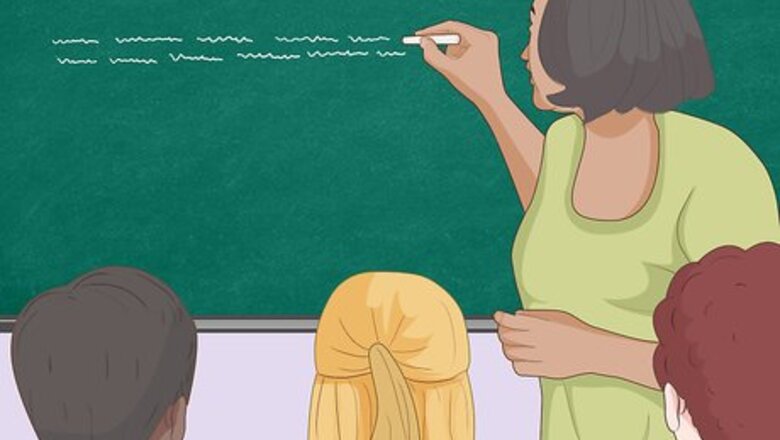
views
Teaching Subtraction with Drawings or Objects
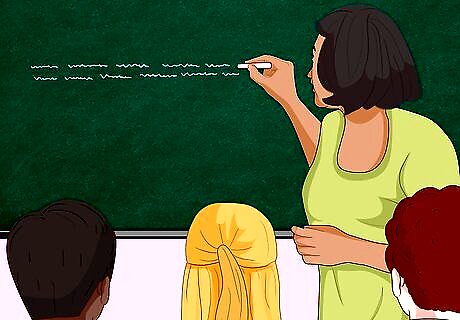
Present your students with a subtraction word problem. Write or recite a subtraction word problem for your students. It's best to write it or provide them with a copy on a worksheet so that they can refer back to the actual problem. There are 8 oranges on the table. Jordan ate 3 oranges. How many oranges are left?
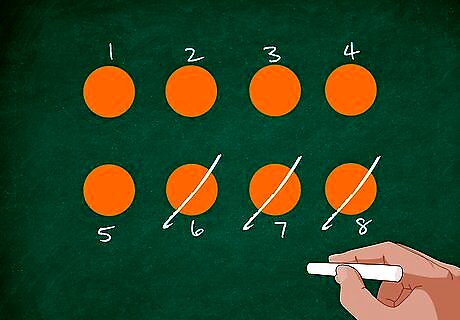
Explain the problem with a drawing. Draw 8 orange circles on the board or a sheet of paper. Ask the students to count the oranges—you may label each orange with a number. As you explain that Jordan ate 3 oranges, cross out or erase 3 of the oranges. Ask the students how many oranges are left.
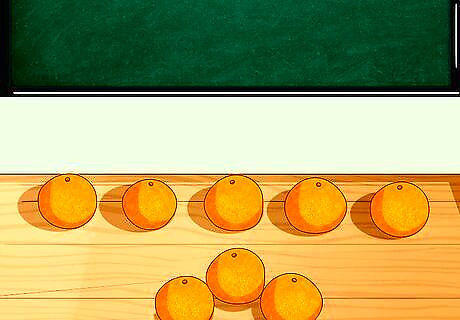
Explain the problem with objects. Place 8 oranges on the table and ask the students to count the oranges. Remove 3 oranges from the table, explaining that Jordan ate 3 of the oranges. Ask the students to count the number of oranges left on the table. When using objects, switch up the items you use so students learn that math rules are universal. For example, work through a problem using oranges, then do it again using crayons. EXPERT TIP Joseph Meyer Joseph Meyer Math Teacher Joseph Meyer is a High School Math Teacher based in Pittsburgh, Pennsylvania. He is an educator at City Charter High School, where he has been teaching for over 7 years. Joseph is also the founder of Sandbox Math, an online learning community dedicated to helping students succeed in Algebra. His site is set apart by its focus on fostering genuine comprehension through step-by-step understanding (instead of just getting the correct final answer), enabling learners to identify and overcome misunderstandings and confidently take on any test they face. He received his MA in Physics from Case Western Reserve University and his BA in Physics from Baldwin Wallace University. Joseph Meyer Joseph Meyer Math Teacher Use playful academic activities and games to build students' math skills. Visual aids such as models, diagrams, and real-world objects transform abstract concepts into something more relatable, promoting a deeper understanding. Interactive activities enhance a student's learning by making math fun and engaging.

Write a number sentence. Explain to your students that you can represent this word problem with a number sentence. Walk them through the process of translating the word problem into a number sentence. Ask them how many oranges are on the table. Write “8” on the board. Ask the students how many oranges Jordan ate. Write “3” on the board. Ask the students if this is an addition or a subtraction problem. Write down “-” between the “8” and the “3.” Ask the students for the solution to “8-3.” Write down “=” followed by a “5.”
Teaching Count-Back Subtraction with a Number Line

Present your students with a subtraction word problem. Write or recite a subtraction word problem for your students. It's best to show them a written problem so that they can refer back to it. There are 10 dogs at the pet store. 6 of the dogs are adopted by new owners. How many dogs are left at the pet store?
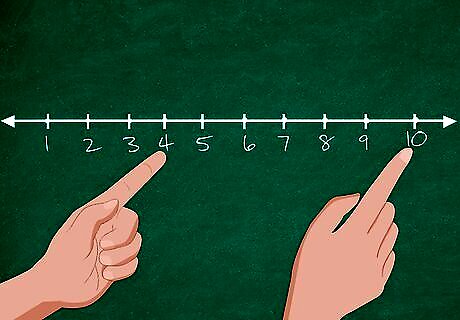
Use a number line to solve the problem. Draw a number line on the board that ranges from 0 to 10. Ask the students how many dogs are at the pet store. Place your marker or pointer on “10.” Ask the students how many dogs are adopted. Count down the number-line 6 places (9, 8, 7, 6, 5, 4) to number “4.” Ask the students how many dogs are left at the pet store. It's a good idea to create a permanent number line that your students can reference. You could use a permanent marker on paper, a poster, or the board, or you could use colorful washi tape on the board or wall.
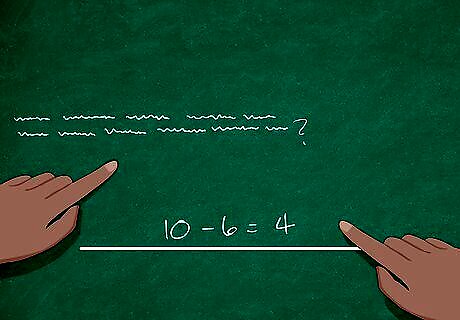
Write a number sentence. Explain that this word problem can be represented by a number sentence. Walk them through the process of translating the word problem into a number sentence. Ask them how many dogs are at the pet shop. Write “10” on the board. Ask the students how many dogs are adopted. Write “6” on the board. Ask the students if this is an addition or a subtraction problem. Write down “-” between the “10” and the “6.” Ask the students for the solution to “10-6.” Write down “=” followed by a “4.”
Teaching Subtraction with Fact Families
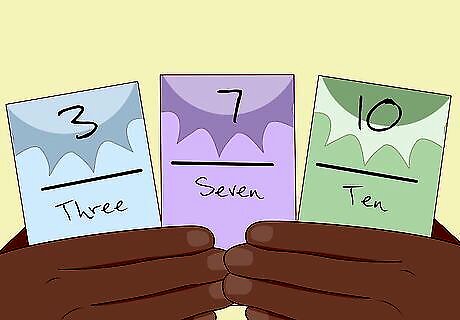
Introduce the concept of fact families. A fact family is a set of facts, or mathematical problems, that use the same numbers. These are three numbers in each fact family. These three numbers can be added or subtracted in different ways. For example, 10, 3, and 7 form a fact family. You can use these three numbers to create two addition number sentences and two subtraction number sentences: 10-3=7 10-7=3 7+3=10 3+7=10

Present your students with a subtraction word problem. Write or state a subtraction word problem for your students: I have 7 candies. I eat 3 of the candies. How many candies do I have left.

Use a fact family to solve this problem. Walk your students through the process step by step: Ask your students which number sentence they are trying to solve. Write “7-3=?” on the board. Ask them to determine the third member of the fact family. Write the following number sentences on the board: “3+__=7”; “__+3=7”; “; “7-__=3”; and 7-3=__” Fill in the blanks as the students provide you with the answers.
Teaching Common Core Subtraction
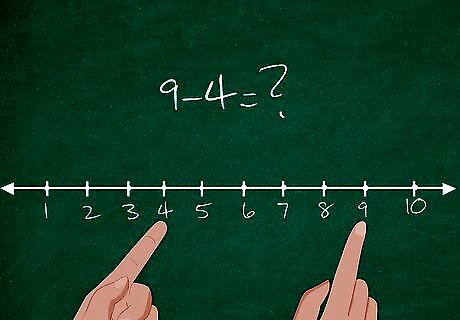
Present the Common Core conceptualization of subtraction. The Common Core presents the concept of subtraction as measuring the distance between two points. To demonstrate this to your students, draw a number line ranging from 0 to 10 on the board as a visual. Provide your students with a basic subtraction problem: 9-4=?. Locate the number 4 on your number line. This is your starting point. Locate the number 9 on your number line. This is your final destination. Measure, or count the distance between the two points: “5, 6, 7, 8, 9.” The distance is five. Therefore, 9-4=5.
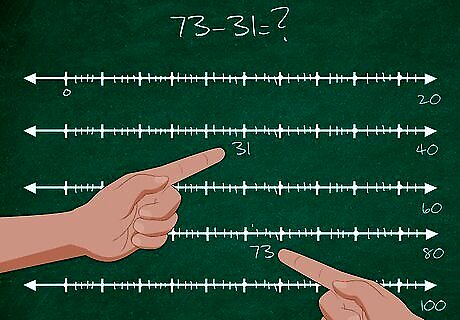
Solve a two-digital subtraction problem. When solving a two-digit subtraction problem, explain to your students that there are more stopping points along the way to the final destination. Provide your students with a two-digit subtraction problem: 73-31=?. Locate the number 31 on your number line. This is your starting point. Locate the number 73 on your number line. This is your final destination. "Stop” at the next tens place. Move from 31 to 40. Measure the distance and write down the answer: 9. "Stop” at the tens place nearest 73. Move from 40 to 70. Measure the distance and write down the answer: 30. "Drive” to your final destination. Move from 70 to 73. Measure the distance and write down the answer: 3. Add together the three measurements: 9+30+3=42. Therefore, 73-31=42.
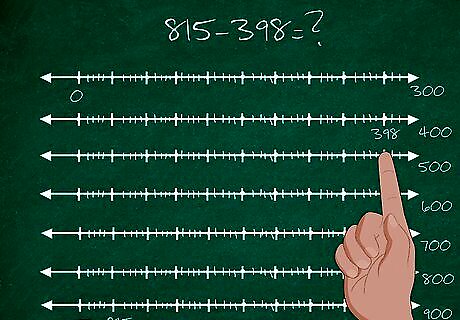
Solve a three-digital subtraction problem. When solving a two-digit subtraction problem, explain to your students that in addition to making extra stops, the distance between the stops will be greater. Provide your students with a three-digit subtraction problem: 815-398=?. Locate the number 398 on your number line. This is your starting point. Locate the number 815 on your number line. This is your final destination. "Stop” at the next tens place. Move from 398 to 400. Measure the distance and write down the answer: 2. "Stop” at the hundreds place nearest 815. Move from 400 to 800. Measure the distance and write down the answer: 400. "Stop at the tens place nearest 815. Move from 800 to 810. Measure the distance and write down the answer: 10. "Drive” to your final destination. Move from 810 to 815. Measure the distance and write down the answer: 5. Add together the 4 measurements: 2+400+10+5=417. Therefore, 815-398-417.















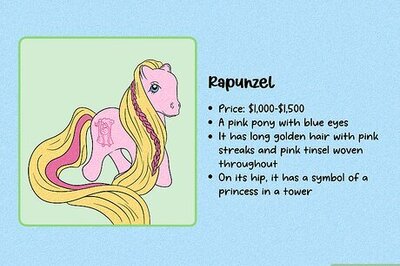
Comments
0 comment